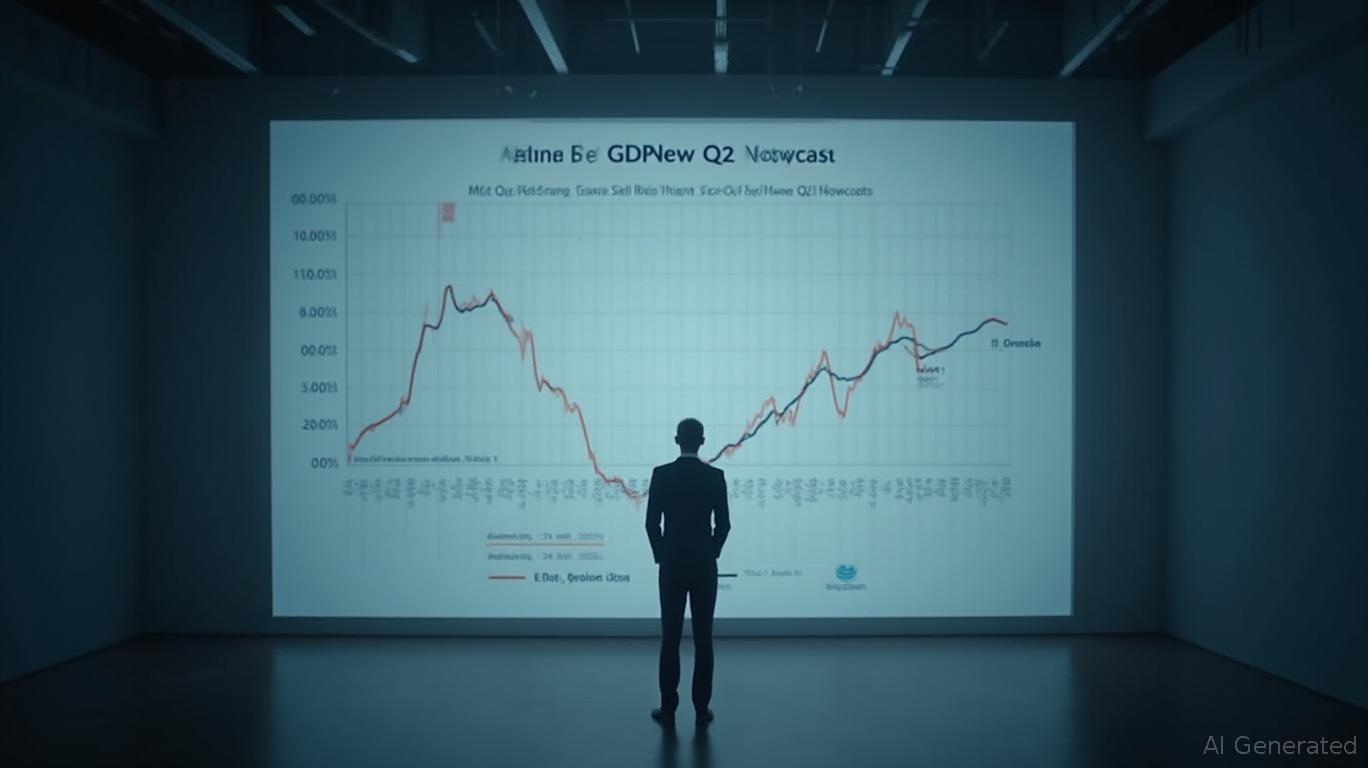U.S. Q2 2025 GDP Nowcast Plummets to 1.59%: A Crossroads for Fed Policy and Asset Allocation
The U.S. economic outlook has taken a sharp turn south, as the St. Louis Federal Reserve's Economic News Index (ENI) nowcast for Q2 2025 GDP dropped to 1.59% on June 6—a staggering 42% decline from its prior week's estimate of 2.71%. This revision, the most significant downward adjustment in the ENI's history, signals a potential loss of momentum in an economy already navigating high inflation, tight credit, and a fragile labor market. Meanwhile, the Atlanta Fed's GDPNow model, which had previously downgraded its forecast to 2.5%, now appears to align with the St. Louis Fed's pessimism. The divergence—and convergence—of these two nowcasting methodologies offers critical clues for investors about Fed policy, sector rotations, and the
of interest rates.
The Nowcast Divergence—and Why It Matters
The St. Louis Fed's ENI and Atlanta Fed's GDPNow models use different approaches to nowcasting GDP:
- St. Louis Fed ENI: Aggregates high-frequency data (e.g., retail sales, manufacturing PMIs) into a dynamic factor model, emphasizing real-time signals. Its recent downgrade was driven by weakening consumer discretionary spending (April retail sales rose just 0.6% vs. 1.0% expectations), a cooling in manufacturing (ISM Manufacturing PMI fell to 50.3 in June), and a widening trade deficit.
- Atlanta Fed GDPNow: Uses bridge equations to translate monthly data into GDP subcomponents. Its May 30 forecast of 2.5% already reflected gloomier trade and housing data, but its lagging methodology may have underestimated the full extent of the slowdown.
Historically, the ENI has an average absolute error of 0.8 percentage points vs. the BEA's final GDP, while GDPNow's error is 0.77 points—a tight race. This time, though, the ENI's sharper decline suggests it's capturing near-term risks that GDPNow's quarterly subcomponent approach may not yet reflect.
Fed Policy: Between a Rock and a Soft Place
The GDP nowcast plunge amplifies the Federal Reserve's dilemma. With core PCE inflation at 3.8% (April 2025) and unemployment at 4.3%, the Fed faces a “Goldilocks” paradox:
- Hawkish Path: If the economy avoids recession, the Fed may keep rates at 5.25%-5.5% through 2026, risking a sharper slowdown.
- Dovish Path: If Q2 GDP stays below 2%, the Fed could cut rates by early 2026 to preempt a contraction.
The Fed's Survey of Professional Forecasters now sees only a 1.5% GDP growth rate for Q2, with a 37% chance of negative growth—a stark contrast to the 2.44% optimism seen in late May. This points to a Fed likely to pause its tightening cycle indefinitely, but not yet commit to cuts.
Sector Impact: Time to Shift to Defensive and Rate-Sensitive Plays
The GDP slowdown has immediate implications for equity and bond markets:
Equities: Rotate to Defensive Sectors
- Consumer Discretionary (Underweight): Retailers like Home Depot (HD) and Best Buy (BBY), which thrived during the 2.44% growth scenario, now face margin pressure as consumers retrench.
- Utilities and Healthcare (Overweight): Defensive sectors like Duke Energy (DUK) and UnitedHealth (UNH) offer stability in a low-growth environment.
- Tech Hardware (Neutral): While AI-driven firms like Applied Materials (AMAT) benefited from earlier optimism, their valuations now hinge on Fed policy. A rate cut could revive them, but GDP softness may temper expectations.
Bonds: Shorten Duration, Embrace Floating Rates
The GDP nowcast collapse strengthens the case for short-term bonds (2–5 years) and floating-rate debt (e.g., BlackRock Floating Rate Income Fund (BFR)), which are less sensitive to yield volatility. Long-duration Treasuries (e.g., iShares 20+ Year Treasury Bond ETF (TLT)) face risks if the Fed's pause triggers inflation fears.
Risks and Opportunities
- Upside Risk: A rebound in services sector activity (e.g., stronger consumer services PMIs) could lift GDP toward Atlanta Fed's 2.5% estimate.
- Downside Risk: A surge in core services inflation (e.g., housing, healthcare) could force the Fed to tighten further, crushing bonds and equities.
Investment Takeaways
- Equity Allocation:
- Overweight utilities and healthcare.
- Underweight consumer discretionary and tech hardware.
Hedge with VIX options to protect against Fed policy whiplash.
Fixed Income:
- Shorten duration to iShares Short Treasury Bond ETF (SHY).
Consider floating-rate instruments like SPDR Bloomberg Barclay's Floating Rate ETF (FLRN).
Monitor Data: The June employment report (June 30) and July's advance GDP estimate will clarify whether the 1.59% nowcast holds or rebounds.
Conclusion
The Q2 GDP nowcast plunge to 1.59% marks a critical inflection point for U.S. markets. While the Fed may pause rate hikes, investors should treat this slowdown as a signal to pivot toward defensive equities and shorter-duration bonds. The path forward hinges on whether the economy can stabilize above 2% growth—or succumb to a deeper contraction. In this environment, patience and flexibility will be rewarded.


Comments
No comments yet